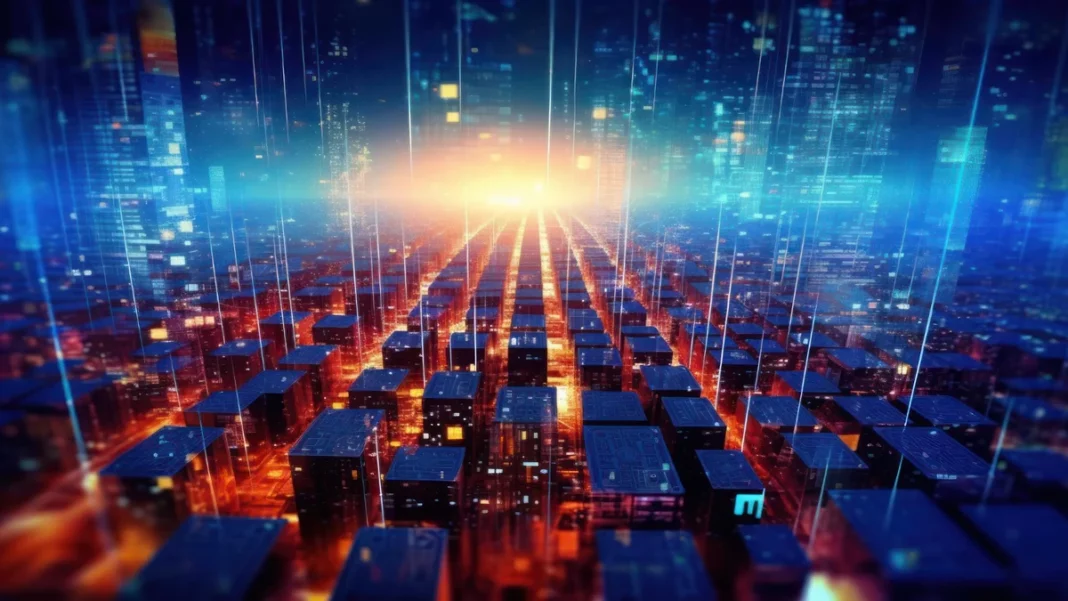The Internet of Things (IoT) is taking centre stage as technology is getting more integrated into our daily lives. This integration significantly impacts our cities, making them smarter, healthier, and safer.
As our population continues to grow and cities evolve, the utilisation of IoT becomes more critical in managing resources and enhancing urban infrastructure. With the help of IoT, cities can become more self-sustaining and improve the quality of life for their citizens.
The Vision of Smart Cities
The digital era has introduced a game-changing concept – smart cities. With the power of the Internet, residents in these cities can access information seamlessly and faster than ever. This newfound efficiency affects everything from transportation and utilities to public safety and environmental stability.
IoT lies at the core of a smart city, revolutionizing how devices connect and interact. From everyday household items to advanced industrial tools, cutting-edge devices communicate and share data effortlessly. IoT seamlessly integrates various urban elements as the binding force, fostering a streamlined and interconnected way of life.
However, IoT’s impact on cities’ development goes beyond mere convenience. It is primarily focused on improving the quality of life. With the help of IoT, cities can now manage real-time air and water quality, provide personalized services for the community, and ensure that the public transportation system remains efficient by delivering accurate and timely data.
How IoT is Enhancing Citizen Happiness?
IoT is making a difference in many ways in improving urban life. Here are some examples of how IoT is making cities healthier and safer:
Citizen Services
The IoT is changing people’s lives by enhancing service delivery and efficiency. By offering real-time information and facilitating better connectivity, urban areas can now quickly and effectively cater to the requirements of their inhabitants, leading to a better quality of life for everyone.
Smart Parking Systems
IoT is having a big impact when it comes to facilitating smart parking systems. IoT alleviates the hassle of finding parking spaces by deploying sensors to detect parking spot occupancy and relaying real-time information to drivers through smartphone apps. This saves time and contributes to reducing carbon emissions, paving the way for a greener future.
Intelligent Traffic Management
IoT is revolutionizing traffic management by enabling real-time monitoring and adjustment of traffic lights. Connected devices and sensors gather data on traffic conditions, allowing for automated signal control. This reduces congestion, enhances safety, and transforms commuting into a more enjoyable experience.
Environment Monitoring
IoT has also become increasingly necessary when it comes to environmental monitoring. By offering real-time data on air quality, noise levels, and other environmental factors, IoT empowers citizens and city officials to stay well-informed and take proactive measures to preserve and enhance environmental well-being.
The Role of IoT in Public Health Management
IoT is reshaping the landscape of public health management. By providing detailed insight into the health of citizens, IoT can help cities develop better disease prevention and healthcare delivery strategies.
Below are some of the ways IoT is being used to improve public health:
Predictive Analysis for Disease Outbreaks
Predictive analysis for disease outbreaks is one of the most intriguing applications of IoT in public health. IoT can uncover trends and patterns that may signal an impending disease outbreak by amalgamating data from hospitals, clinics, and public health departments.
This empowers health authorities to take proactive measures, such as scaling up vaccination campaigns or issuing public health advisories, mitigating the impact of potential outbreaks.
Remote Health Monitoring
The advent of wearable devices, such as smartwatches and fitness trackers, has shifted the paradigm in how we monitor our well-being. These innovative gadgets empower us to effortlessly track vital health parameters, including heart rate, sleep patterns, and physical activity levels.
These devices play a pivotal role in promoting preventive healthcare and overall well-being by providing valuable insights.
Pollution Monitoring and Control
By deploying sensors throughout cities, real-time air and water quality monitoring becomes possible, providing helpful information on pollution levels. This information empowers city officials to enforce pollution control measures with greater efficacy and enables timely alerts to citizens when pollution reaches hazardous levels, enabling them to take necessary precautions.
Smart Waste Management
Utilising sensors, smart bins can intelligently alert waste management services when they reach full capacity. This innovative approach optimizes collection routes and schedules, increasing waste collection efficiency. Consequently, it helps reduce litter and the spread of diseases, making cities cleaner and healthier places to live.
How IoT is Improving Security and Safety?
Given the significant influence of the IoT on smart cities, it comes as no shock that it has become an indispensable tool in enhancing safety and security.
Through real-time surveillance, access control, and analytics, IoT helps cities to safeguard their residents from potential threats more efficiently.
Smart Surveillance
Smart surveillance systems utilize interconnected cameras with algorithms to monitor areas, public spaces, and building structures. These systems can detect behaviour, track the movements of vehicles and pedestrians, and even identify individual faces.
By providing real-time notifications and the flexibility to adapt to circumstances, smart surveillance presents a viable solution for ensuring personal security.
Crime Prediction and Prevention
The IoT is also contributing significantly to the prediction and prevention of crimes. Analysing data gathered from sources such as media updates, crime reports, and CCTV recordings, tools for predictive policing can identify areas and trends that may be prone to criminal activities.
Law enforcement agencies can utilize this information to allocate their resources efficiently, take proactive measures against potential criminal incidents, and ultimately work towards building safer communities.
Disaster Management
When it comes to disaster management, IoT helps with prediction and response procedures. Sensors can monitor environmental conditions to predict natural disasters like floods or earthquakes, giving people more time to prepare or evacuate.
In the aftermath of a disaster, IoT devices can help locate survivors, assess damage, and coordinate relief efforts.
Real-time Response Systems
When there’s an emergency, time becomes crucial. Real-time response systems that utilize IoT ensure that assistance reaches the scene swiftly.
For example, smart devices can automatically notify emergency services in case of a car accident or a medical crisis, providing them with details about the location and nature of the incident. This enables more effective responses, potentially saving lives and minimizing harm.
Smart Cities are becoming a Reality
As technology continues to evolve and become more accessible, smart cities are becoming a reality. The IoT facilitates complex systems integration and offers a platform for optimizing many of the services we use daily.
By harnessing the power of these technologies, we can create a future that is both sustainable and secure for all.

Author_Bio:
Subbu Seetharaman
Subbu Seetharaman is the Director Of Engineering, at Lantronix, a global provider of turnkey solutions and engineering services for the internet of things (IoT). Subbu is an engineering executive with over 25 years experience in leading software development teams, building geographically distributed, high performing teams involved in developing complex software products around programmable hardware devices.
Also Read : India’s 5g Network: Changes to Your Life with Next-Generation Technology


